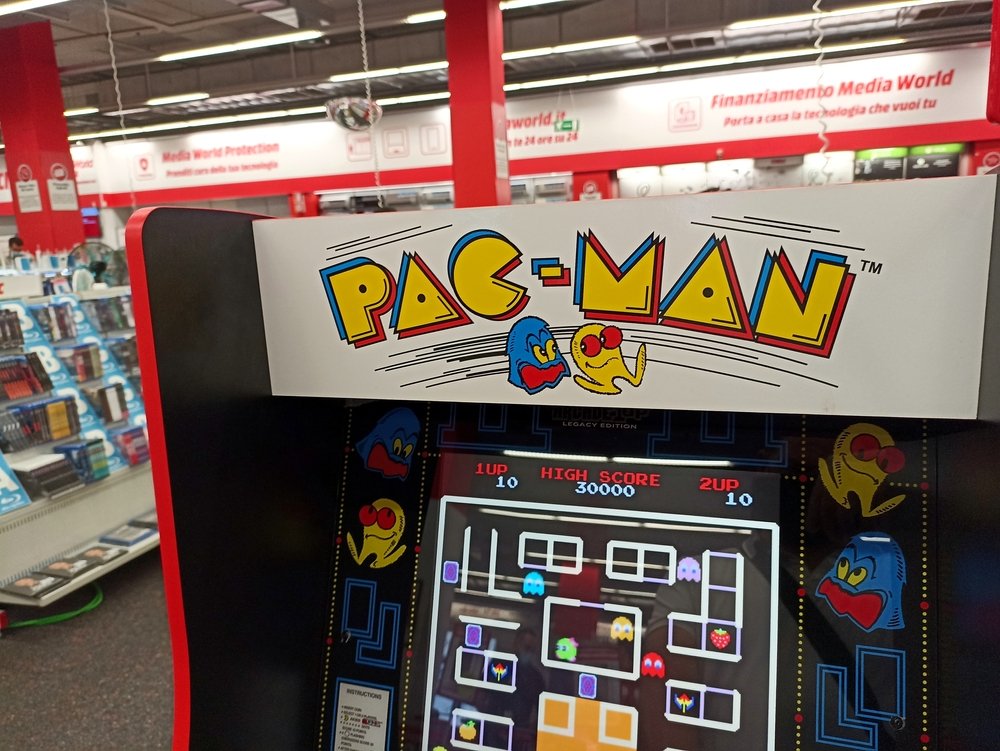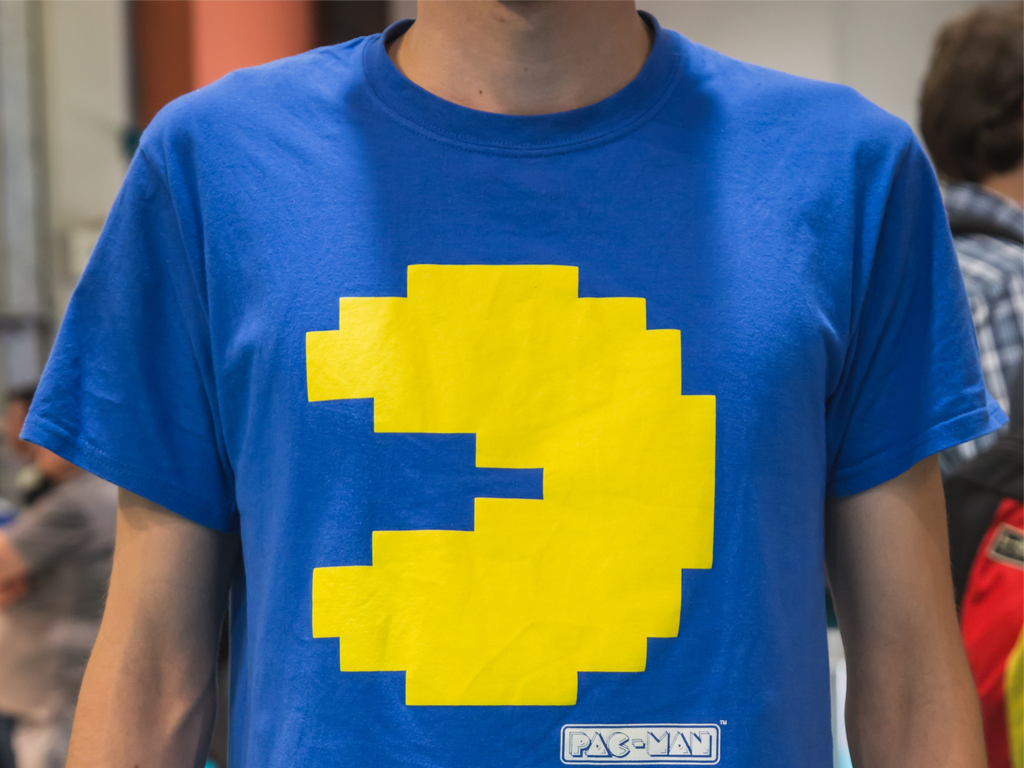Last Updated on January 25, 2024 by Gamesver Team and JC Franco

In 1980, an unusual game started to appear in arcades and shopping malls in Japan. It didn’t take long before the game made its way to the US. After its debut in the United States, it became a nationwide success. Some even considered it a social phenomenon in its heyday. The game needs no real introduction, but yes, it’s Pac-Man that’s being referred to.
Pac-Man is a simple but challenging maze game with adorable colorful ghosts, running after a yellow disk-like character. It took the world by storm and sparked an enthusiasm for the game fondly referred to as “Pac-Mania.” If you want to learn more about how Pac-Man changed the video game industry, read on.
It’s undeniable that Pac-Man transformed the gaming industry in several ways. As a tribute to this revolutionary game, let’s explore several ways in which Pac-Man changed the video games industry and, essentially, the World.
Pac-Man revolutionized the gaming industry in the following 13 ways:
1. The game added an entirely new game genre to the industry.
Pac-Man was in a genre of its own when it was released. After Pac-Man was released, new games started emerging in this new genre, including Lady-Bug, Munch-Man, and Snack Attack.
2. Pac-Man introduced AI in games.
Pac-Man introduced many concepts to the video gaming industry. Before Pac-Man, no one thought to use AI in games, making Pac-Man the first. The programmers of the game used deterministic AI in the behavior of the set of four ghosts that spend their time chasing after Pac-Man.
Now modern games often use AI in mechanisms not directly visible to the player. Techniques like pathfinding and decision trees to guide NPCs’ actions are also used often, and it’s thanks to Pac-Man for getting game developers to start thinking along these lines.
3. The game introduced the first cutscenes in games.
After clearing level one, Pac-Man appears on the screen without the maze. In this scene, Blinky chases Pac-Man, and they both disappear off-screen. After a few seconds, a giant Pac-Man chases after Blinky, who has turned blue. These cutscenes, which were only a few seconds long, have now developed into a cinematic quality and sophistication level.
4. The game uses stealth play.
80s games were mainly about shooting, killing, and finishing off as many enemies as possible. A low-profile chasing game such as Pac-Man was simply not the norm. Pac-Man runs away from the ghosts and waits for his time. He has to be strategic and careful. It’s not about killing anyone but rather about being stealthy enough to get through the rounds without being caught.
Pac-Man was quite a different concept from regular games that were popular and introduced a whole new way of gameplay.
5. It was the first broad licensing success.
As you can see, Pac-Man added many new concepts to the gaming industry, but that’s not all it did. It also played a significant role in expanding the industry too.
Back in the day when Pac-Man was released, it was the norm to head down to the local arcade to play all the favorite games. When Pac-Man became popular, it seemed that more people wanted to play arcade games in their homes, which spurred broad licensing.
6. It was the first game that attracted the female demographic.
Another contribution of Pac-Man in expanding the gaming industry was bringing the female population into the picture.
Arcades were dominated by males. Not many games appealed to women, as most were based on war and killing. All of this changed when Pac-Man’s creator set out to make a game that appealed more to the feminine market. They had no idea that it would become a phenomenon that appeals to all ages and genders.
Since Pac-Man hit the scene, more female players have steadily entered the gaming market each year.
7. Pac-Man is part of pop culture.

It’s safe to say that Pac-Man brought on pop culture with its quick global success and millions of followers. Buckner & Garcia was inspired by the Pac-Mania and wrote a song, “Pac-Man Fever,” that reached no. 9 in the US Top Chart. Everyone was playing Pac-Man; everyone was buying the merchandise and singing the song too. It’s safe to say that Pac-Man had become a pop sensation.
8. It was the inspiration for experimentation.
Pac-Man inspired game designers to do experiments with characters, scenarios, environments, and stories in their games. Designers were stuck with the same plot and theme for a long time, and when the success became well-known, game designers were ready to make changes.
9. Pac-Man paved the way for video games on TV.
The huge success of Pac-Man paved the way for video games on TV. Pac-Man became a TV series in 1982 produced by Hanna-Barbera. The success of the show inspired producers to think about bringing other popular gaming characters to the small screen. Pole Position, Q*Bert got their animation series after Pac-Man. Pokémon was developed to be a game but turned into a television series.
Now film adaptions of video games are a common scenario. Prince of Persia, Lara Craft: Tomb Raider, Mortal Combat are some of the games adapted as films.
10. It introduced the concept of a playable character.
Before Pac-Man, not many games had playable characters that came even close to Pac-Man. After the release of Pac- Man, the title character became the face of the game. It was the first gaming mascot, which set a fine example for game designers – after all, gaming characters’ importance had just been realized.
The yellow circle with a mouth ate its way into the heart of millions of people. Without Pac-Man, we might not have characters like Mario, Lara Croft, or Master Chief.
11. It was the first game to introduce power-ups.
Modern games allow players to increase their character’s power or natural abilities through power-ups, but the concept is not so modern. The idea of power-ups was first used in Pac-Man, where he eats a power pellet that enables him to eat the ghosts too.
In Pac-Man, the title character needs to eat all the dots while avoiding the ghosts to succeed. While Pac-Man is on the run from ghosts for the majority of the game, there are moments when he can turn the tables on the ghosts by eating a power pellet. And then everything changes.
Power-ups allow Pac-Man to eat the ghosts and maximize on points. It comes as no surprise that many games started incorporating power-ups after noticing just how successful it was in Pac-Man.
12. Pac-Man sparked the idea of game-inspired merchandise.

Pac-Man started the tradition of creating and selling game merch. When the game became a massive hit, Pac-Man-themed merchandise sold at an exponential rate. The success of selling game-inspired merchandise took off from there, and now all game brands follow suit.
13. The game has generated huge revenue for the industry.
The 80s were considered to be the golden age of video arcade games. During this period the total sale of video game machines in North America rose from $50 million in 1978 to $900 million by 1981. North America’s arcade video game revenue tripled to $2.8 billion within this period.
Pac-Man played a significant role in making this huge amount of revenue for the gaming industry. It generated over $1 billion in quarters within the first years of its release. During the 20th century, it grossed approximately 10 billion in quarters. Undoubtedly it was the golden age for the video gaming industry, marking a new beginning for it.
Wrap Up
To wrap up, Pac-man is a game that influenced the entire gaming industry. With its unique gameplay and unusual features, Pac-man won the hearts of millions of gamers worldwide and transformed the video game industry into what it is today.

